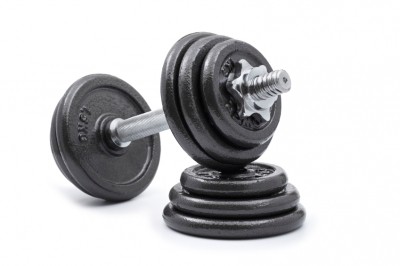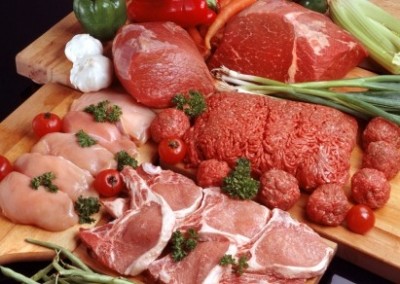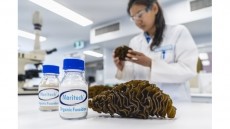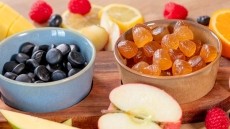Special edition: Sports nutrition
The science of sports ingredients
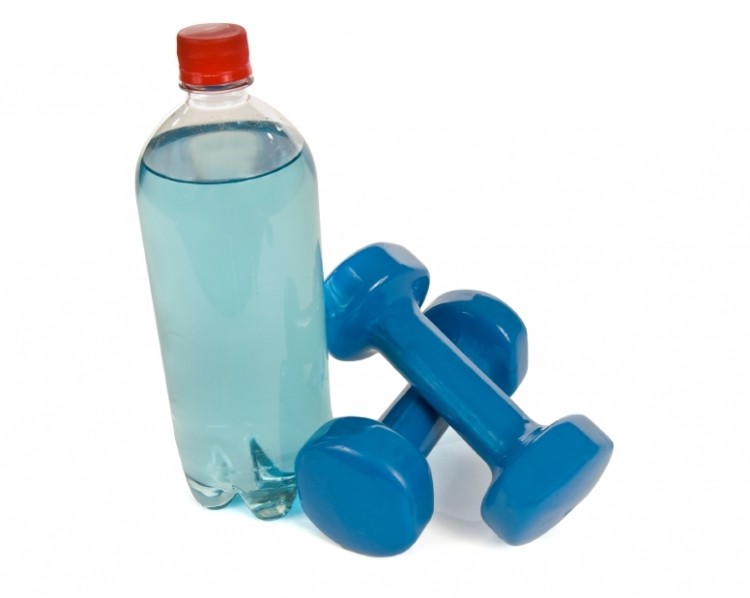
Sports nutrition is a very competitive market: Datamonitor, which classifies sports nutrition as sports drinks and energy bars, places the European market at US$2.8bn (€2.3bn) in 2008, with a forecast to reach $3.6bn (€2.95bn) by 2013.
In the US, sports nutrition sales were valued at $2.9bn (€2.4bn) in 2008, forecast to grow to $3.5bn (€2.9bn) by 2013.
But what ingredients are driving the product innovations?
Protein
Protein is a key player in sports nutrition products, whether it’s the protein-rich products for body builders or ‘softer’ products for the less serious athlete. The main sources of protein are whey from dairy and soy proteins. A recent review by Solae’s Gregory Paul outlines the rationale for a blend of proteins from animal and vegetal sources (Journal of the American College of Nutrition, 2009, Vol. 28, No. 4, 464S-472S).
Concerns have been raised over excessive protein intakes, however, with some linking this to calcium wasting or extreme pressure on the kidneys. A position paper by the International Society of Sports Nutrition supported the intake of protein by exercising individuals, with recommendations of between 1.4 and 2 grams per kilograms of body weight per day (that’s 98 grams per day for a 70 kg person).
“When part of a balanced, nutrient-dense diet, protein intakes at this level are not detrimental to kidney function or bone metabolism in healthy, active persons,” states the position paper. “While it is possible for physically active individuals to obtain their daily protein requirements through a varied, regular diet, supplemental protein in various forms are a practical way of ensuring adequate and quality protein intake for athletes.” (Journal of the International Society of Sports Nutrition, 2007, 4, 8)
Co-Q10
Coenzyme Q10 plays a key role in energy and endurance. With chemical structure 2,3-dimethoxy-5-methyl-6-decaprenyl-1,4-benzoquinone, it is also known as ubiquinone because of its 'ubiquitous' distribution throughout the human body.
The level of CoQ10 produced by the body begins to drop after the age of about 20, and the coenzyme is concentrated in the mitochondria - the 'power plants' of the cell. It plays a vital role in the production of chemical energy by participating in the production of adenosince triphosphate (ATP), the body's co-called 'energy currency'.
Various studies support the benefits of CoQ10 for athletes and athletic performance. Japanese researchers reported in 2008, for example, that CoQ10 possessed anti-fatigue effects. Both fatigue and recovery time were decreased as a result of 300 milligrams of CoQ10 for eight days (Nutrition, Vol. 24, pp. 293-299).
Carnitine
Another established ingredient is L-carnitine, a compound reported to play a critical role in fat and energy metabolism. L-carnitine is involved in the transport of long-chain fatty acids into the mitochondria where they are metabolized for energy.
University of Connecticut scientists reported in the Journal of Strength and Conditioning Research (2007, Vol. 21, pp. 259-264), for example, that supplements of L-carnitine L- tartrate (Carnipure, Lonza) may reduce markers of oxidative stress and improving recovery at a one gram doses for eight weeks.
Carnosine
Not to be confused with carnitine, L-carnosine and its precursor beta-alanine are popular sports supplements. According to Dr Matti Tolonen, Docent of Occupational Health at the Institute of Public Health, Univertsity of Helsinki: "The benefits of L-carnosine and beta-alanine for an athlete become apparent almost immediately.
"Carnosine is a versatile antioxidant and effective intramuscular buffer. It is believed to promote healthy and strong heart function and even contribute to the body´s ability to heal wounds and injuries," added Dr Tolonen. (for example Sports Medicine 2010, Vol. 40, pp. 247-63; Med Sci Sports Exerc. 2010, Vol. 42, pp. 1162-73;J Strength Cond Res. 2010, Vol. 24, pp. 79-87).
Creatine
No article about sports nutrition would be complete without creatine, the amino acid-like compound was first identified in 1832 for its presence in muscle.
Creatine, which occurs naturally in foods like fish and red meat, is classified by the International Olympic Committee as food. The amino acid creatine is available as a dietary supplement in liquid, tablet and powder forms, chiefly in the form of creatine monohydrate.
The ingredient has been the subject of about 70 randomized, controlled trials over the last 12 years or so, with the majority investigating creatine’s performance-enhancing benefits. A 2005 review by Michael Bemben and Hugh Lamont from the University of Oklahoma concluded that “activities that involve jumping, sprinting or cycling generally show improved sport performance following creatine ingestion” (Sports Medicine, Vol. 35, pp. 107-125).
Some concerns over intake of creatine have been voiced, including a potential increase in the risk of cancer. However, a risk assessment by John Hathcock and Andrew Shao from US supplements trade association the Council for Responsible Nutrition (CRN) reported that evidence from well-designed, randomized clinical trials in humans indicated that the upper safe limit (USL) for creatine monohydrate is 5 grams per day (Regulatory Toxicology and Pharmacology, 2006 Vol. 45, pp. 242–251).
Antioxidants
When we exercise we produce reactive oxygen species (ROS), which has seen many people talking up the importance of antioxidants to reduce the burden of oxidative stress, which may damage muscles.
In an interview with NutraIngredients last year, Dr Rob Childs, nutritional biochemist for the Cervelo Pro Cycling Test Team, said: “Studies dating back to the 1980s have shown that antioxidants reduce muscle damage, while more recent investigations demonstrate that they can also improve both ventilatory and exercise performance. Such effects are of particular relevance to exercising populations.”
The benefits also appear to extend across the age groups. A recent study published in the Journal of the International Society of Sports Nutrition reportedthat a combination of antioxidants was associated with a 17 per cent increase in the anaerobic threshold – the amount of work done before lactic acid begins to accumulate in the blood – in people over the age of 50.
The supplement used was the branded Niteworks supplement (Herbalife International Inc, California), which contains a proprietary blend of L-arginine with L-citrulline, vitamins C and E, folic acid, L-taurine, and alpha lipoic acid.
Milk
While carefully formulated sports drinks continue to dominate the market a growing body of science is supporting the potential of humble cow’s milk as the sports beverage du jour. Last week studies funded by the National Dairy Council and National Fluid Milk Processor Promotion Board, and presented at last week’s American College of Sports Medicine conference found that chocolate milk performed just as well as specially designed carbohydrate sports drinks for recovery.
Scientists led by William Lunn from the University of Connecticut reported that fat-free chocolate milk could boost muscle building (protein synthesis), increase levels of glycogen – muscle fuel – which could boost future sports performance.
The Connecticut data echo earlier findings from Loughborough University's School of Sports and Exercise Sciences published in 2007 in the British Journal of Nutrition (Vol. 98, pp. 173-180). The study reported that skimmed milk could enhance re-hydration after exercise, while participants consuming water or Powerade remained dehydrated.
Scientists from McMaster University in Canada reported similar results for muscle mass gain for female resistance athletes, and attributed this to milk’s calcium/vitamin D and protein content.
Writing in the journal Medicine and Science in Sports and Exercise (doi: 10.1249/MSS.0b013e3181c854f6), proposed that milk contains amino acid building blocks that help trigger muscle growth, but these are typically absent in carbohydrate drinks.
Lead author Andrea Josse highlighted the importance of Leucine, an essential amino acid found in significant quantities in dairy protein that has been shown to trigger protein synthesis at a molecular level.
Beetroot
A recent surprise entrance onto the market is beetroot, with a much publicised study by scientists at the University of Exeter in the UK reporting that beetroot juice may boost stamina and allow people to exercise for up to 16 per cent longer.
The vegetable juice’s nitrate content may reduce oxygen uptake to an extent that cannot be achieved by any other known means, making exercise less tiring, according to findings published in the Journal of Applied Physiology (doi:10.1152/japplphysiol.00722.2009).
“Our study is the first to show that nitrate-rich food can increase exercise endurance,” said Professor Andy Jones. “We were amazed by the effects of beetroot juice on oxygen uptake because these effects cannot be achieved by any other known means, including training.”
Disclaimer: This article has been updated to include information about L-carnosine, which was omitted from the original. Apologies.
